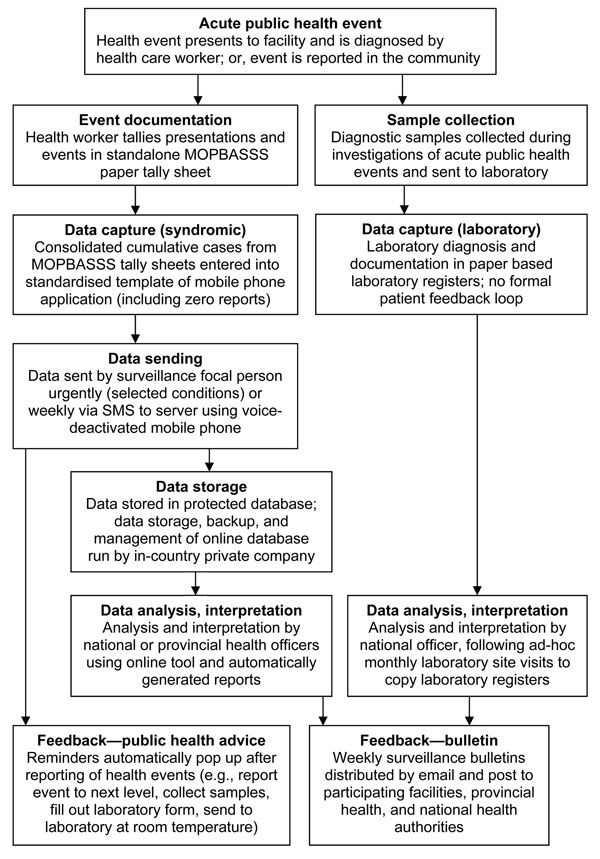Volume 19, Number 11—November 2013
Research
Mobile Phone–based Syndromic Surveillance System, Papua New Guinea
Figure 1

Figure 1. . Information flow for mobile phone–based syndromic surveillance system (MOPBASSS) pilot program, Papua New Guinea, 2011. SMS, short message service.
Page created: October 31, 2013
Page updated: October 31, 2013
Page reviewed: October 31, 2013
The conclusions, findings, and opinions expressed by authors contributing to this journal do not necessarily reflect the official position of the U.S. Department of Health and Human Services, the Public Health Service, the Centers for Disease Control and Prevention, or the authors' affiliated institutions. Use of trade names is for identification only and does not imply endorsement by any of the groups named above.